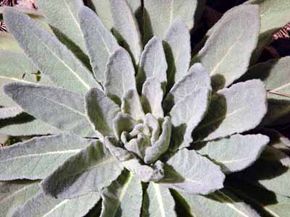Lamb's-ear, or lamb's-tongue, is one of those plants that begs to have a finger run along its surface. The common name is precisely on the mark, since the gray-white, woolly leaves feel exactly like a lamb's skin. The genus name is Greek for "a spike of grain."
Advertisement
Description of lamb's-ears, lamb's-tongue: The 4-inch-long leaves and sturdy stems of this plant are covered with dense, white wool. Plants grow to about 6 inches tall. Flower spikes up to 2 feet tall bear small, pink to purple flowers hidden by silvery bracts. Ease of care: Easy.
Growing lamb's-ears, lamb's-tongue: Lamb's-ears require full sun and a good, well-drained soil. They are drought-resistant.
Propagating lamb's-ears, lamb's-tongue: By division in spring or by seed.
Uses for lamb's-ears, lamb's-tongue: Try this plant along the edge of a sunny border, in the rock garden, or as an effective ground cover. Even though the flowers are insignificant, the dried spikes are very effective in dried arrangements. It also does well in pots for terrace decoration.
Lamb's-ears, lamb's-tongue related variety: Silver Carpet is a non-flowering form of the same plant.
Scientific name for lamb's-ears, lamb's-tongue: Stachys byzantina
Advertisement
